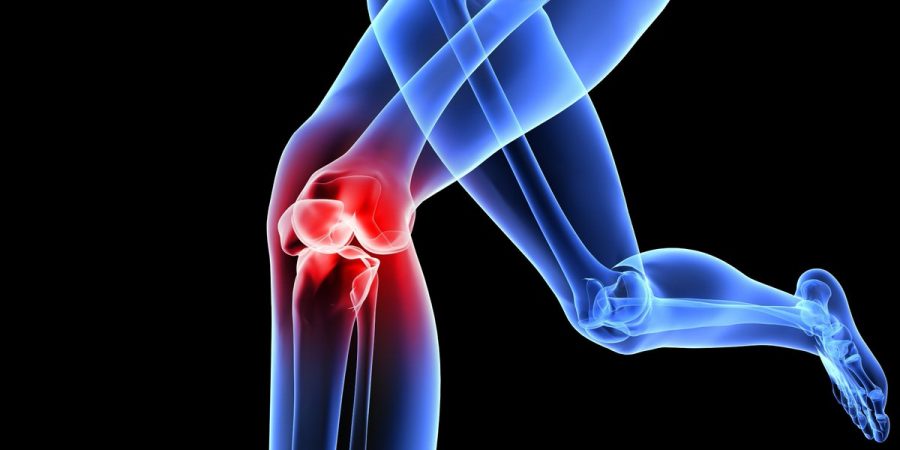Did you know that less than 1% of bacteria actually make people sick? But when they do make you sick, it can really do a number on your health.
For example, there are bone and joint infections that can be quite serious. This is why it’s important that you know the signs so you can seek medical help when needed.
In this article, we’ll discuss what bone and joint infections are so you know what to look out for.
What Are Bone and Joint Infections?
Bone and joint infections are infections that result from harmful bacteria getting into your body. The bacteria in bone and joint infections that’s usually found is Staphylococcus aureus, which is better known as staph.
Staph infection is serious because not only can it be life-threatening, but also because there’s a strain that’s resistant to methicillin, which is the usual antibiotic used to treat bone and joint infections. If you manage to get the resistant strain, then you’ll have to be put on significantly stronger antibiotics to try and get the infection under control.
Other Types of Bone and Joint Infections
Staph isn’t the only type of bone and joint infection you can get.
For example, there’s osteomyelitis. This is where you initially have an infection somewhere else (such as a urinary tract infection, or UTI), but the infection isn’t controlled and ends up spreading to your bones (this is what “osteo” means: bones).
Osteomyelitis can also happen if you have some type of puncture or injection to the bone, such as through surgery. This open area can then be an optimal spot for bacteria to get in, which will then result in osteomyelitis.
Also, you might think that you’re dealing with arthritis. However, instead of the normal type, it might actually be septic arthritis. This is where your joint becomes inflamed as a result of either a bacterial or fungal infection.
Septic arthritis can happen if you’ve had a puncture wound. Or bacteria can circulate in your bloodstream from an infection at a surgery site, similar to osteomyelitis.
Bone and Joint Infection Symptoms
Now that you know more about bone and joint infections, the next thing you should learn are its symptoms. That way, you can keep a close eye out, especially if you or someone you love is going through surgery or recently have had one.
Some symptoms you should watch out for include:
- Redness, swelling, and warmth
- Pain in a specific area that keeps getting worse
- Pain with touch in that area
- Pain with bearing weight in that area
- Fever
- Fatigue
If you’re not feeling well, especially after surgery, then make sure you seek some medical help. Even if it turns out not to be anything, it’s much better to be safe than to be sorry.
Bone and Joint Infections in Children and the Elderly
When it comes to bone and joint infections in infants and children, septic arthritis is most commonly seen. The elderly are susceptible to this type of bone and joint infection too.
However, the symptoms will present differently in each.
For infants and children, you’ll typically see symptoms in the hips. But if you’re dealing with the elderly, then the most commonly affected sites are the knees and hips.
Bone and Joint Infection Treatment
If you suspect that you or a loved one has a bone and joint infection, make an appointment with your doctor. They’ll then perform numerous tests, including a physical exam, blood tests, and x-ray. If needed, they might also order a computed tomography (CT) and magnetic resonance imaging (MRI).
Once a bone and joint infection is confirmed, then you’re treated with intravenous (IV) antibiotics while at the hospital.
For children, they must seek the treatment of a pediatric infectious disease specialist. They might even need a pediatric orthopedic surgeon in some cases.
Some kids might need a special IV: a peripherally inserted central catheter (PICC) line. If your child needs to go home, then they can still continue their IV treatment there.
What Happens if You Don’t Treat Bone and Joint Infections?
Bone and joint infection is a serious matter. If you don’t get it treated in a timely fashion, your health can quickly deteriorate.
For example, all the above symptoms (such as fever, redness, and swelling) can all intensify. This can all be very unpleasant to deal with.
In addition, the infection can quickly spread to other places. Needless to say, this can become life-threatening and even fatal in a very short period of time.
Lastly, even if you do manage to pass the infection on your own, you might have to deal with permanent damage to your joints. This is because the infection can cause a huge amount of damage to both your cartilage and bone, which are needed for your joints to function correctly.
As you can see, it’s very important that you consult with a doctor if you suspect that you or a loved one has a bone and joint infection. That way, you can get immediate treatment that can prevent permanent damage and unpleasant symptoms.
Recognize Bone and Joint Infections Early On
As you can see, bone and joint infections can be quite serious. If you don’t get them treated early on, then it can turn into a deadly situation pretty quickly.
Do know that if you get a staph infection, it’s usually not through any fault of yours. So don’t feel guilty about anything you’ve done and seek medical attention immediately if you don’t feel well. Being proactive can literally save your life or the one of a loved one.
If you’d like to read more articles like this one on bone and joint infections treatment, then browse the rest of our blog section now.

